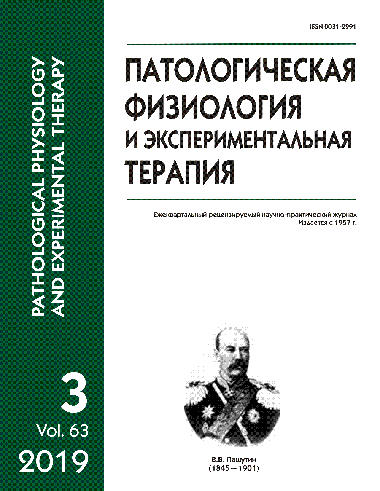Enzymatic profiling of blood plasma and lymphocytes in systemic lupus erythematosus: focus on purine and pyrimidine metabolizing enzymes
Abstract
Purine and pyrimidine metabolic pathways are emerging topical areas of research from the perspective of both basic science and development of innovative therapies for systemic lupus erythematosus (SLE). It is particularly important, therefore, to disclose characteristic enzymatic patterns for further prediction of the response to treatment. Objective: to characterize activity patterns of the major enzymes of purine and pyrimidine metabolic pathways in SLE. Methods. Samples were obtained from 50 patients with verified SLE and 30 healthy controls. Disease activity was assessed using the ECLAM scale. Blood lymphocytes were isolated by a standard density gradient centrifugation procedure. Activities of 10 major purine and pyrimidine enzymes were measured in blood plasma and lysed lymphocytes. Results. For different enzyme groups, enzyme activities directly or inversely correlated with SLE severity. Plasma purine nucleoside phosphorylase, adenosine kinase, uracil/thymidine dehydrogenase, IMP dehydrogenase, cytidine deaminase, thymidine kinase, dihydroorotate dehydrogenase, and lymphocyte adenosine kinase, IMP dehydrogenase, and thymidine kinase activities positively correlated with the ECLAM score. Negative correlations with ECLAM score were found for plasma adenosine deaminase and thymidine phosphorylase, and for lymphocyte purine nucleoside phosphorylase, adenosine deaminase, guanylate kinase, uracil/thymidine dehydrogenase, cytidine deaminase, thymidine phosphorylase, and dihydroorotate dehydrogenase. Activities of plasma purine nucleoside phosphorylase, adenosine kinase, IMP dehydrogenase, and lymphocyte purine nucleoside phosphorylase, adenosine deaminase, and adenosine kinase activities had the highest correlations with minimal SLE activity and represented candidate markers for the disease severity. Conclusion. The studied enzymatic patterns can be used as auxiliary markers of SLE activity, with special emphasis on minimal disease activity.






